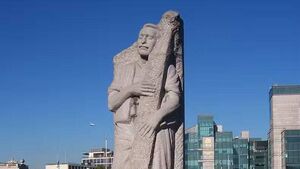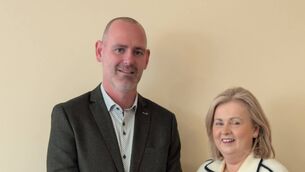Matt Talbot … a powerful recovery from addiction

The Matt Talbot statue in central Dublin
ADDICTION is lived reality for many good people. And the life story of one Irishman and his recovery is truly inspirational.
Matt Talbot was born May 1856 in Dublin. He was one of 12 children, six of whom lived to adulthood. His father was a heavy drinker and, as a result, the family grew up in poverty. Typical of his era, Matt spent just one year at school. There was no compulsory education and he was unable to read or write. He entered the workforce at age 12, employed by E&J Burke, a firm which bottled beer. His drinking began with taking the dregs from the bottom of bottles, which had been returned. Within two years, he graduated to whiskey and by the time he was 16, he came home drunk regularly.
By the time he was in his 20s, he spent all his wages and spare time in O'Meara's Pub. Matt Talbot was a habitual drunk. When his wages were spent, he borrowed and scrounged for money. He supplemented his wages by doing extra work after hours.
He became a thief, once stealing a fiddle from a blind man. On Saturdays he would come home with just a shilling from his wages for his mother. His life had become unmanageable. His drinking companions had several hobbies, but Matt had only one –alcoholic drink.
By the time he was 28, he was well on the road to self-destruction, when a traumatic incident changed his life. On a Saturday morning in 1884, he waited outside O'Meara's without a penny in his pocket. His problem, he told himself, would be quickly solved. When he had money, he shared it generously with his drinking friends. Therefore, he reasoned, they would not reject him in his misfortune. But they did.
Perhaps he had scrounged money from them too often, but they left him standing on the corner. Matt Talbot was stunned and shocked. Years later, he said that he was "cut to the heart". But it was a moment of grace. After some time thinking about his problem, he realised that he was totally enslaved to drink. He made his way home slowly. His mother was preparing the mid-day meal when he arrived. In 19th century, Ireland it was common for someone who wished to stop drinking to take a solemn pledge to abstain for a period of time. Mrs Talbot could not believe her eyes when Matt came home sober on that fateful Saturday morning.
"Ma, I'm going to take the pledge for life," he said. He headed off to a nearby seminary, where the priest persuaded him that he should take the pledge for 90 days only.
Those three months were sheer hell. But he had an iron will, a rock-like stubbornness that stood him well down through the years.
"I know that I will drink again when the three months are up," he would remark to his mother. To fill in the time he used to spend in O'Meara's, Matt went for a walk every evening after work. During one of those walks his resolution almost broke. He caught the strong smell of beer from a pub and saw the crowded bar. The barman was busy serving the local men, and he paid little attention to this stranger waiting at the counter. Matt felt humiliated for the second time within a few weeks. Deeply hurt, he stormed out of the bar down the street and into a Jesuit church. That evening he made another resolution, never to carry money with him. He kept that resolution for the rest of his life.
Matt was neither fit nor religious-minded, but gradually he began to pray. He decided to attend Mass every morning before work and eventually took the pledge for life.
Matt Talbot now turned all his effort to increasing his union with God and developing his life of prayer. He turned to a Jesuit priest, Fr James Welshe to help him. His austere daily programme may shock us today, but he allowed himself just four or five hours’ sleep at night and arose about 5am to prepare for early Mass. Then he would return home for breakfast. Afterwards he would set off for work in the timber yard of T&C Martin. But at a time when Dublin labourers were often exploited, he was not a ‘bosses’ man. He had learned to read and write and was ready to discuss the rights of workers.
Matt had an iron will and a constitution to match. Neither the other workers in T&C Martin's, nor his fellow workers on Dublin's docks had an idea that he was leading a life modelled on the early Irish monks. But many workers knew about his generosity. Matt lent them money to buy clothes or shoes for their children or to pay overdue rent.
Matt Talbot died suddenly from a heart attack on the way to Mass on Sunday 7 June 1925. He was buried in what was virtually a pauper's grave in Glasnevin Cemetery a few days later. The story of his life came to light because, when his body was undressed, three chains were discovered wrapped around it. Inquiries disclosed that he practiced a devotion known as the slavery to Mary.
In 1972, his remains were removed to a tomb in Our Lady of Lourdes Church in Seán McDermott Street. In 1975, the Holy See conferred the title ‘Venerable’ on him, meaning Matt Talbot has the qualifications of a saint. If this opinion is confirmed by the miracles required by Canon Law, he will be canonised.





